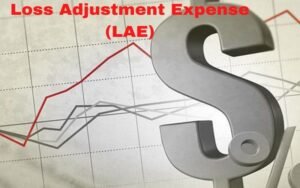What is seigniorage?
The gap between money’s face value, such as a $10 note or a quarter coin, and its production costs is known as seigniorage. Put another way, the objective exchange value, which usually benefits the governments that mint the money, is more than the cost of generating a currency within a specific economy or nation.
The government will benefit if the seigniorage is favorable; a negative seigniorage would lead to a loss.
Understanding Seigniorage
When a government’s income exceeds its cost of production, it is referred to as seigniorage. Governments often utilize this money to pay for some of their expenses without levying taxes. The seigniorage is 95 cents, or the difference between the two sums, if, for instance, it costs the U.S. government 5 cents to generate $1. A nation with seigniorage can make money when it creates it.
Seigniorage is defined as the quantity of goods or services that a government may purchase by printing new notes, even though it is often defined as the difference between the cost of producing new currency and its face value.
Sometimes, the government printing money may lose money during the currency’s creation rather than make money. Coin manufacturers are more likely to face this loss since the metal used to make coins has intrinsic worth. This value, also known as the melt value, could be lower than the denomination it represented initially, or it might even turn a profit when manufacturing expenses are considered. For instance, in 2021, the manufacturing expenses of the U.S. penny, which has a face value of one cent, came to 2.10 cents, marking the sixteenth consecutive year that these expenditures have surpassed the penny’s face value.
The market’s demands may cause the melt value to fluctuate over time, which might eventually cause the metal’s value to surpass the face value of the money. Silver coins, like the American silver quarter and silver dime, are one example.
Example of Seigniorage in the Real World
The Federal Reserve placed a yearly order with the Department of the Treasury’s Bureau of Engraving and Printing, covering manufacturing expenses based on expected demand for new money. The Fed publishes comprehensive data on the cost of producing each currency denomination. For instance, producing a $20 note will cost 13.8 cents in 2022, while a $100 bill will cost 17 cents. The U.S. Mint handles coin production. It is contingent upon the volume of Federal Reserve Bank orders solicited. The Federal Reserve then buys the coins at face value.
Particular Points to Remember
Although the fundamental idea of seigniorage implies that a nation may make money by printing new money, other variables may also influence the transaction as a whole. The Federal Reserve will buy a Treasury bill (T-bill) in return for allowing the manufacture of additional dollars if it consents to raise the amount of money accessible inside the U.S. economy.
It is crucial to remember that Treasury bills need interest payments to the Federal Reserve in addition to the initial investment made when the bill was acquired, even if the government may seem to benefit when the cost of manufacturing is less than the face value of the bills.
The Law of Seigniorage and Gresham
A monetary theory known as “Gresham’s law” holds that “bad money drives out good.” Gresham’s rule was first predicated on the worth of the precious metals used in coins and their composition when they were produced. Put another way, if a silver coin is worth $0.50 and a gold coin is worth $5, people will swap ten silver coins for the gold coin and hoard the gold coin. Consequently, the gold coins become less valuable, and the bad money, silver, pushes out the good money, gold.
Even if the face value of the gold coin is the same as that of ten silver coins, it now has a higher value, making this an effective seigniorage. Nonetheless, the idea has been used to examine the relative stability of the values of various currencies in international markets since the adoption of metallic currency standards.
What Are Seigniorage’s Historical Roots?
The word “seigniorage” has its roots in the European feudal lord era. The power to issue coins belonged to “seigneurs,” or lords.
How Much Does a Dollar Bill Cost to Produce?
Twenty-two cents will be needed to make one U.S. dollar in 2022. Accordingly, there are 92.5 cents in seigniorage for every $1 of currency.
What Is the U.S. Mint’s Coin Production Cap?
The United States Mint manufactured almost 14 billion coins in circulation in 2021. Coins used for routine transactions, such as the penny, nickel, dime, and quarter, are called circulating coins. The U.S. Mint also produces precious metal and commemorative coins.
The Final Word
When the face value of money is more than the cost of production, governments may make money thanks to seigniorage. Usually, the income is used to pay for expenses without collecting taxes.
Money creation might be counterproductive and lead to losses. This is the situation with the U.S. penny, whose production costs are 2.10 cents. In contrast, it costs 7.5 cents to generate one U.S. dollar, so its significance is 92.5 cents.
Conclusion
- The discrepancy between the face value of money, which includes coins and paper money, and the cost of production is known as seigniorage.
- When a government generates more income than it costs to produce, it might consider seigniorage to be positive revenue.
- Sometimes, the government printing money may lose money during the currency’s creation rather than make money.













































